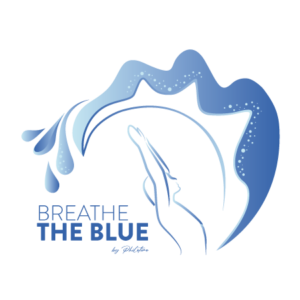I was introduced to the emotion wheel by Tash Cowell, an energy teacher and life coach I follow on TikTok. My rational brain loved seeing all the emotions organized in such a comprehensive way.
There are two main ways of utilizing the wheel that I have found helpful. The first is to use it to identify what you are currently feeling and explore associated feelings to better understand your current state of mind and emotions. To do this, you might sit down with the wheel when you have a moment to rest and contemplate, such as at the end of a long day.
For example, let’s say your first thought when you look at the wheel is that you are feeling hopeful. Once you find hope on the middle band of the wheel, you can see that the associated core feeling (nearer the center) is joyful, and the more specific, nuanced feeling (on the outer band) is optimistic.
Perhaps you had a particularly good day at work because your boss praised you for a project that was especially well done, and you are feeling joyful, hopeful, and optimistic about life. That’s great! Savor the moment!
Dr. Gloria Willcox’s Emotion Wheel
Dr. Gloria Willcox developed a tool called the Emotion Wheel which is used to identify and understand emotions. The wheel comprises six primary emotions: surprise, fear, anger, disgust, sadness, and happiness. The wheel starts with the basic emotions at the center and breaks down the emotions as you move outwards. The tool can be used in two ways.
Firstly, it can be used to identify what you are currently feeling by drilling down into specific emotions. This helps to better understand what you are feeling. For example, if you are feeling surprised about your promotion, you might actually be excited and eager to start your new role. Secondly, it can be used to reverse the emotion by going to the opposite side of the wheel. For instance, if you are feeling jealous, you might want to feel sensitive; if you are feeling hesitant, you want to feel shocked. The Willcox Wheel can’t tell you how to change your emotions but can help you identify the emotions you want to embrace.
Research shows that it is important to be able to label experiences with specificity. People who are high in emotion differentiation are less likely to drink excessively when stressed and less likely to react aggressively against someone who has hurt them. Moreover, training individuals to expand their emotional vocabulary and use it flexibly can help them regulate their emotions more effectively. The present tool was designed to help clients expand their emotional vocabulary.
Here are some tips for using the Feeling Wheel. Note that the feelings depicted in the wheel are not a complete overview of all possible feelings and emotions, but rather serve as a guide and starting point. It is preferable to use the wheel during the day to avoid memory distortions or inaccurate cognitive representations of experiences. It can be useful for clients to carry a hard copy or store a digital image on their phones so that it can be accessed at any given time. Note that it is possible to experience different emotions at the same time, and the emotions and feelings in the wheel are not mutually exclusive but can exist in many combinations, including positive and negative at the same time.
The tool can also be used to increase self-compassion. It is important to pay attention to the experiences that are present, to take appropriate compassionate action. For instance, if a client realizes that he or she experiences shame, the kind inner voice that can be cultivated can be focused on the experience of this specific emotion. Negative feelings in the inner band of the wheel are located on the opposite side of the wheel than the positive feelings, but this should not be used to replace or avoid emotions. When a client experiences sadness, it is advisable to allow the sadness to be present rather than to try to replace it with joyful thoughts.
Overall, the Feeling Wheel is a helpful tool, but some feelings are missing from it. Some common human emotions such as “pissed off at my partner” and “ready to strangle my mom” should be included in the wheel.

